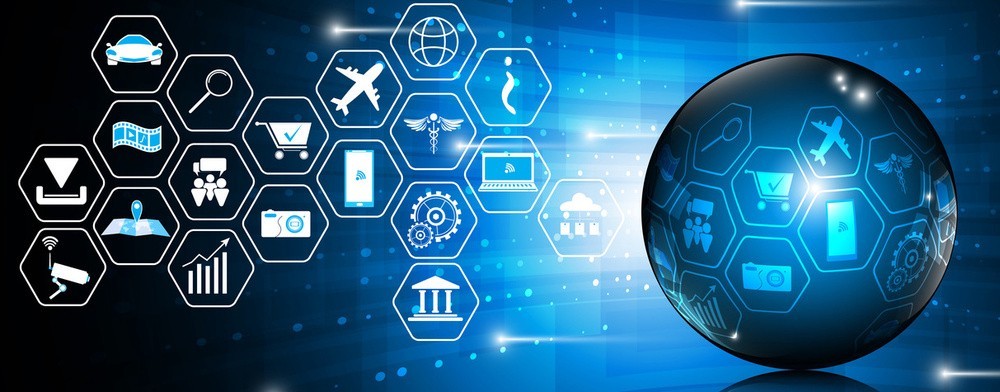
IoT Devices for building automation.
Internet of Things (IoT) Devices are changing the building automation industry.
What is the effect of IoT devices on the building automation industry? A standalone, proprietary network is built in a traditional automated building to connect with environmental systems and basic devices. The network is linked to controls, which are linked to sensors and terminal devices such as fans, heating and cooling valves, and dampers that are used to regulate the environment.
Advanced systems are connected to a building's IT infrastructure in order to exchange building data with other systems or to enforce cybersecurity. These connections are usually made at the building system's front end or at the automation network's top-level controllers. This leaves the building automation network exposed at the lowest levels because the proprietary network that runs the building isn’t necessarily compatible with security implemented at the IT level.
IoT connectivity is beginning to feed a new level of intelligence for buildings all the way down to the sensor level, creating new opportunity.
As a result, many systems are left separated from the IT network within a building, or compromises are made to security. The trend for building automation devices is taking us in another direction, however. More sensors, actuators, and controllers are being designed with IoT capabilities.
IoT Devices

To put it simply, an IoT computer is one that is capable of connecting to the Internet through an IoT communication protocol. It must communicate in a safe manner and use standard IoT protocols like MQTT and the REST API. The protocol ensures that the system communicates with other IoT devices and data collectors in the same language. As a result, data from the information from the device can be sent to the cloud and interpreted by information hubs. The purpose of the IoT connection to these hubs is to allow for the sharing of device data to run functionality and operations more effectively and efficiently. It’s also for sharing that data with different systems that may feed other business processes. Examples include IoT-connected occupancy sensors analyzing office space utilization across a portfolio of buildings.
Since a computer that links to the Internet might not be transmitting information that can be readily interpreted by other users, the concept of IoT devices is critical. MQTT and other IoT protocols ensure that others can read system data. Since BAS communications are controlled by proprietary knowledge, this is a groundbreaking technological move for the building automation system (BAS) industry. Even when using a unifying communication protocol, such as BACnet, information can be wrapped in proprietary packets, denying other systems the use of that data.
Simply put, just because you have access to a device's data doesn't mean your interface would be able to read it. Assume a computer is to be graded as genuinely IoT. In that case, it should send its data to the cloud in a format that is accessible to other IoT devices and systems through a particular protocol. In a BACnet implementation, data availability is not guaranteed. BACnet remains the industry's most interoperable approved standard. It can easily exchange data over IP, and now with BACnet Secure Link, it can do so safely. Still, IoT is motivated by a higher level of need that doesn't require delving into the specifics of the BAS control system and instead monitors and shares data that can be shared more easily among other systems, analytic and AI engines.
API
Within that concept, devices that excel at that communication have a location. The development of an API is one way to boost functionality. Other programmers may use an API to access a program's features without having to see the source code. In effect, it's a way for systems to communicate with devices without having to know anything about how they work. For instance, an IoT thermostat may transmit sensor data to the cloud. It could transmit temperature, humidity, or even CO2 readings.

You may be able to send commands back to the thermostat using a normal communication protocol, such as a temperature goal set-point or humidity and CO2 thresholds. You may use an API to integrate both the sensor data and the control into your own applications. This means that a hotel check-in app could also change room temperature preferences, or a hospital, or a booking system could display when an OR has reached the correct environmental setting for a procedure.
This is a huge step forward for the commercial building automation industry, as previously, only a few people had access to commercial space power. The access is usually controlled by a proprietary front-end framework that organizes data in a way that only building automation experts and building operators can understand. Building control has become much more available thanks to IoT and APIs. From the identification of occupants leaving their homes to their arrival at work, a building's controls can now be engaged for occupancy. In the cloud, all of this information is shared. Schedules can be shared among cloud applications, allowing the building to plan environments thermally and for safe access – all while sharing a single link to an occupant's work schedule. This exposes the need and expectation for mobility and accessibility, wherever and whenever the user needs and based on their daily activities. IoT provides accessibility through cloud data, visualizations, and insights.
Changing the World
How will this new automation industry help us and change the world? The ability to adjust a boardroom’s temperature might not seem important during the COVID-19 pandemic because you probably shouldn’t even be using that boardroom. Remember, though, an IoT device is defined as a more accessible device that can be accessed more easily by other systems.
While the boardroom’s temperature may not be your primary concern, what if you could see when the boardroom was used last? When was it cleaned or sterilized last? What if you could signal to building maintenance that an area should be cleaned?
IoT technology has many functions that allow us to get back to our offices faster and even help control outbreaks. IoT can be implemented on devices that are wireless or use other communication methods. With Bluetooth beaconing from BAS devices to your smartphone, a system could know where users are in a building and log where they have been.
What does this mean? If someone tests positive for COVID-19, other users who shared space with that person would be alerted so they could quarantine. In a smart office, you could know with a great deal of accuracy whether you crossed paths with someone who contracted COVID-19. You could take action based on that knowledge by getting tested and self-isolating. When a significant number of COVID-19 carriers are asymptomatic, this kind of information could go a long way to mitigating the spread of an outbreak.
Connectivity
How will this new automation industry help us and change the world? The ability to adjust a boardroom’s temperature might not seem important during the COVID-19 pandemic because you probably shouldn’t even be using that boardroom. Remember, though, an IoT device is defined as a more accessible device that can be accessed more easily by other systems.

IoT networking is starting to fuel a new level of building intelligence. System-level analysis with forecasting is becoming more popular. Power management providers and companies that provide fault detection and diagnostics are using it. With access to building data, AI algorithms are resolving more of the complex problems that many complex structures face in larger institutional buildings. Having all of this data available to the cloud is really the target.
Algorithms that look for trends in building data or data from different buildings may solve problems that human operators are unable to find. For example, this may include providing insightful visualizations of incidents and alarms that occur inside buildings on a regular basis so that facility managers can handle maintenance problems more quickly and efficiently. This is done by analyzing patterns of larger data sets in the cloud and applying machine learning algorithms to identify patterns, trends and predict issues that can be properly planned and managed.
The Internet of Things is changing more than just how building networks and devices are built. The Internet of Things is altering the availability of building data all the way down to the sensor level. This gives AI the ability to take data from many buildings – or even hundreds or thousands of buildings in the future – and find possibilities for more productive operations that we wouldn't see in a conventional setting